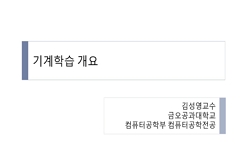본 연구에서는Geostationary Environment Monitoring Spectrometer (GEMS)로 측정된 이산화질소 칼럼 농도를 이용하여 다중선형회귀(multiple linear regression)와 extreme gradient boosting (XGBoost) 모델을 통해 2021년 12월...
http://chineseinput.net/에서 pinyin(병음)방식으로 중국어를 변환할 수 있습니다.
변환된 중국어를 복사하여 사용하시면 됩니다.
- 中文 을 입력하시려면 zhongwen을 입력하시고 space를누르시면됩니다.
- 北京 을 입력하시려면 beijing을 입력하시고 space를 누르시면 됩니다.


한반도 지역의 정지궤도 환경위성탑재체(GEMS) 자료 기반 지표이산화질소 혼합비 추정 = Estimation of Surface Nitrogen Dioxide Volume Mixing Ratios over South Korea from GEMS Observations
한글로보기https://www.riss.kr/link?id=A109688078
- 저자
- 발행기관
- 학술지명
- 권호사항
-
발행연도
2025
-
작성언어
Korean
-
주제어
Surface nitrogen dioxide ; GEMS ; Machine learning ; 지표 이산화질소 ; GEMS ; 기계학습
-
등재정보
KCI등재,SCOPUS,ESCI
-
자료형태
학술저널
- 발행기관 URL
-
수록면
291-300(10쪽)
- DOI식별코드
- 제공처
- 소장기관
-
0
상세조회 -
0
다운로드
부가정보
국문 초록 (Abstract)
XGBoost 모델을 통해 추정한 지표 이산화질소 혼합비와 in-situ 측정값 간의 correlation coefficient (R), rootmean squared error (RMSE), mean absolute error (MAE)는 각각 0.86, 5.60 ppb, 3.72 ppb로, 다중선형회귀 모델(R=0.71, RMSE=7.96, MAE=5.62)보다 더 나은 추정 성능을 보였다. 또한, 계절 평균 공간 분포와 상대 오차(relative difference) 분석을 통해 지표 이산화질소 혼합비의 계절적 특성을 확인하였다. 본 연구는 GEMS자료를 기반으로 대한민국의 지표 이산화질소 혼합비를 추정할 수 있는 가능성을 보여주며, 지역 및 계절특성을 반영한 모델 개선의 필요성과 활용 가능성을 제시한다.
본 연구에서는Geostationary Environment Monitoring Spectrometer (GEMS)로 측정된 이산화질소 칼럼 농도를 이용하여 다중선형회귀(multiple linear regression)와 extreme gradient boosting (XGBoost) 모델을 통해 2021년 12월부터 2022년 11월까지 1년 동안 대한민국의 지표 이산화질소 혼합비를 추정하였다.
XGBoost 모델을 통해 추정한 지표 이산화질소 혼합비와 in-situ 측정값 간의 correlation coefficient (R), rootmean squared error (RMSE), mean absolute error (MAE)는 각각 0.86, 5.60 ppb, 3.72 ppb로, 다중선형회귀 모델(R=0.71, RMSE=7.96, MAE=5.62)보다 더 나은 추정 성능을 보였다. 또한, 계절 평균 공간 분포와 상대 오차(relative difference) 분석을 통해 지표 이산화질소 혼합비의 계절적 특성을 확인하였다. 본 연구는 GEMS자료를 기반으로 대한민국의 지표 이산화질소 혼합비를 추정할 수 있는 가능성을 보여주며, 지역 및 계절특성을 반영한 모델 개선의 필요성과 활용 가능성을 제시한다.
다국어 초록 (Multilingual Abstract)
The XGBoost model shows good agreement against the multiple linear regression model based on evaluationvia comparisons with the in-situ measurements at AirKorea sites. The correlation coefficient (R), root meansquared error (RMSE), and mean absolute error (MAE) between the surface NOY VMR estimated using theXGBoost model and the in-situ measurements are 0.86, 5.60 ppb, and 3.72 ppb, respectively, compared to0.71, 7.96 ppb, and 5.62 ppb for the multiple linear regression model. Seasonal average spatial distributionsand relative difference analyses also revealed seasonal characteristics of surface NOY VMR. This studydemonstrates the potential of using GEMS observation data to estimate surface NOY VMR over South Koreaand highlights the importance of model improvements that consider regional and seasonal variability.
In this study, we estimate surface nitrogen dioxide (NOY) volume mixing ratio (VMR) over SouthKorea from December 2021 to November 2022 using multiple linear regression and extreme gradient boosting(XGBoost), based on the Geostationary Environment Mon...
In this study, we estimate surface nitrogen dioxide (NOY) volume mixing ratio (VMR) over SouthKorea from December 2021 to November 2022 using multiple linear regression and extreme gradient boosting(XGBoost), based on the Geostationary Environment Monitoring Spectrometer (GEMS) observation data.
The XGBoost model shows good agreement against the multiple linear regression model based on evaluationvia comparisons with the in-situ measurements at AirKorea sites. The correlation coefficient (R), root meansquared error (RMSE), and mean absolute error (MAE) between the surface NOY VMR estimated using theXGBoost model and the in-situ measurements are 0.86, 5.60 ppb, and 3.72 ppb, respectively, compared to0.71, 7.96 ppb, and 5.62 ppb for the multiple linear regression model. Seasonal average spatial distributionsand relative difference analyses also revealed seasonal characteristics of surface NOY VMR. This studydemonstrates the potential of using GEMS observation data to estimate surface NOY VMR over South Koreaand highlights the importance of model improvements that consider regional and seasonal variability.
동일학술지(권/호) 다른 논문
-
Semantic Segmentation of Fire Fronts in Helicopter Imagery Using Vision Transformer Models
- 대한원격탐사학회
- 박강현
- 2025
- KCI등재,SCOPUS,ESCI
-
- 대한원격탐사학회
- ( Jooseo Lee )
- 2025
- KCI등재,SCOPUS,ESCI
-
- 대한원격탐사학회
- ( Dong Duy Vu )
- 2025
- KCI등재,SCOPUS,ESCI
-
웹캠 이미지 빛의 밝기 분석에 기반한 가스 센서 개발: 가스가 충전된 고분자 소재의 가스 충전량과 확산도 측정에 활용
- 대한원격탐사학회
- 이지훈 ( Jihun Lee )
- 2025
- KCI등재,SCOPUS,ESCI




 ScienceON
ScienceON KISS
KISS







